Related Research Articles

The British Army is the principal land warfare force of the United Kingdom, a part of the British Armed Forces along with the Royal Navy and the Royal Air Force. As of 1 January 2023, the British Army comprises 78,060 regular full-time personnel, 4,060 Gurkhas, 27,570 volunteer reserve personnel, and 4,520 "other personnel", for a total of 114,210.

The British Armed Forces, also known as His Majesty's Armed Forces, are the military forces responsible for the defence of the United Kingdom, its Overseas Territories and the Crown Dependencies. They also promote the UK's wider interests, support international peacekeeping efforts and provide humanitarian aid.

The Commander-in-Chief of the Forces, later Commander-in-Chief, British Army, or just the Commander-in-Chief (C-in-C), was (intermittently) the professional head of the English Army from 1660 to 1707 and of the British Army from 1707 until 1904. In 1904 the office was replaced with the creation of the Army Council and the appointment of Chief of the General Staff.

The Royal Bermuda Regiment (RBR), formerly the Bermuda Regiment, is the home defence unit of the British Overseas Territory of Bermuda. It is a single territorial infantry battalion that was formed on the amalgamation in 1965 of two originally voluntary units, the mostly black Bermuda Militia Artillery (BMA) and the almost entirely white Bermuda Rifles, and the only remaining component of the Bermuda Garrison since the 1957 withdrawal of regular units and detachments from Bermuda.
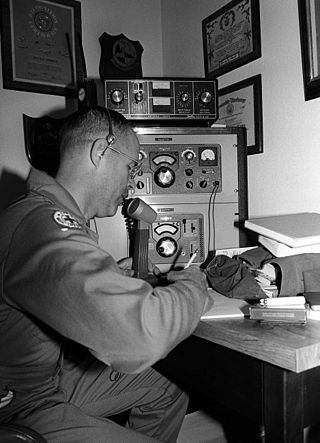
Auxiliaries are support personnel that assist the military or police but are organised differently from regular forces. Auxiliary may be military volunteers undertaking support functions or performing certain duties such as garrison troops, usually on a part-time basis. Unlike a military reserve force, an auxiliary force does not necessarily have the same degree of training or ranking structure as regular soldiers, and it may or may not be integrated into a fighting force. Some auxiliaries, however, are militias composed of former active duty military personnel and actually have better training and combat experience than their regular counterparts.
The British Army is listed according to an order of precedence for the purposes of parading. This is the order in which the various corps of the army parade, from right to left, with the unit at the extreme right being highest. Under ordinary circumstances, the Household Cavalry parades at the extreme right of the line. Militia and Army Reserve units take precedence after Regular units with the exception of The Honourable Artillery Company and The Royal Monmouthshire Royal Engineers.

The Battle of Dujaila was fought on 8 March 1916, between British and Ottoman forces during the First World War. The Ottoman forces, led by Colmar Freiherr von der Goltz were besieging Kut, when the Anglo-Indian relief force, led by Lieutenant-General Fenton Aylmer, attempted to relieve the city. The attempt failed, and Aylmer lost 4,000 men.
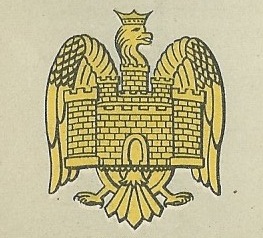
The Bedfordshire Yeomanry was a Yeomanry regiment of the British Army. Serving intermittently between 1797 and 1827, it was re-raised in 1901 for the Second Boer War. It participated in the First World War before being converted to an artillery regiment. It served in the Second World War. Its lineage was maintained by 201 Battery, 100th (Yeomanry) Regiment Royal Artillery until that unit was placed in suspended animation in 2014.
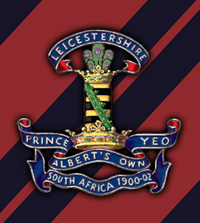
The Leicestershire Yeomanry (Prince Albert's Own) was a yeomanry regiment of the British Army, first raised in 1794 and again in 1803, which provided cavalry and mounted infantry in the Second Boer War and the First World War and provided two field artillery regiments of the Royal Artillery in the Second World War, before being amalgamated with the Derbyshire Yeomanry to form the Leicestershire and Derbyshire (Prince Albert's Own) Yeomanry in 1957. The regiment's lineage is currently perpetuated by E (Leicestershire and Derbyshire Yeomanry) Squadron of the Royal Yeomanry.
The Volunteer Force was a citizen army of part-time rifle, artillery and engineer corps, created as a popular movement throughout the British Empire in 1859. Originally highly autonomous, the units of volunteers became increasingly integrated with the British Army after the Childers Reforms in 1881, before forming part of the Territorial Force in 1908. Most of the regiments of the present Army Reserves Infantry, Artillery, Engineers and Signals units are directly descended from Volunteer Force units.
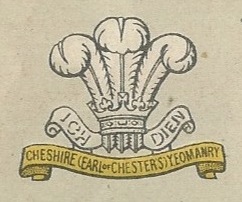
The Cheshire Yeomanry was a yeomanry regiment that can trace its history back to 1797 when Sir John Leicester of Tabley raised a county regiment of light cavalry in response to the growing fears of invasion from Napoleonic France. Its lineage is maintained by C Squadron, the Queen's Own Yeomanry.
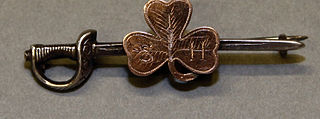
The South Irish Horse was a Special Reserve cavalry regiment of the British Army. Formed as an Imperial Yeomanry regiment in 1902 as the South of Ireland Imperial Yeomanry, it perpetuated a unit formed during the Second Boer War. It transferred to the Special Reserve (Cavalry) in 1908 and was renamed as the South Irish Horse. Having taken part in the fighting of World War I, it was disbanded after Irish Independence in 1922.

The Queen's Own West Kent Yeomanry was a British Army regiment formed in 1794. It served in the Second Boer War and the First World War. It amalgamated with the Royal East Kent Yeomanry to form the Kent Yeomanry in 1920.
The Royal North Devon Yeomanry was a Yeomanry regiment of the British Army. First raised in 1798, it participated in the Second Boer War and the First World War before being amalgamated with the Royal 1st Devon Yeomanry in 1920 to form the Royal Devon Yeomanry.
The King's Regulations is a collection of orders and regulations in force in the Royal Navy, British Army, Royal Air Force, and Commonwealth Realm Forces, forming guidance for officers of these armed services in all matters of discipline and personal conduct. Originally, a single set of regulations were published in one volume. By the mid 19th century, there were separate editions of the Queen's Regulations for the Navy and the Army, and there is now one for each of the United Kingdom's armed forces.
The London Mounted Brigade was a yeomanry brigade of the British Army, formed as part of the Territorial Force in 1908.
The Royal 1st Devon Yeomanry was a Yeomanry regiment of the British Army. First raised in 1794, it participated in the Second Boer War and the First World War before being amalgamated with the Royal North Devon Yeomanry in 1920 to form the Royal Devon Yeomanry.
The Shropshire Royal Horse Artillery was a Territorial Force Royal Horse Artillery battery that was formed in Shropshire in 1908 from the Shropshire Battery of the 1st Shropshire and Staffordshire Artillery Volunteers, Royal Garrison Artillery of the Volunteer Force. It saw active service during the First World War on the Western Front in 1917 and 1918 as part of an Army Field Artillery Brigade. A second line battery, 2/1st Shropshire RHA, also served on the Western Front in 1917 and 1918 as part of another Army Field Artillery Brigade. It was reconstituted post-war as a medium artillery battery and served as such in the Second World War.
The 2nd Home Counties Division was a 2nd Line Territorial Force division of the British Army in World War I. The division was formed as a duplicate of the 44th Division in November 1914. As the name suggests, the division recruited in the Home Counties, particularly Kent, Middlesex, Surrey and Sussex. In August 1915, in common with all Territorial Force divisions, it was numbered as 67th Division. Between September 1917 and the end of the year, the division was extensively reorganized and lost its territorial identity; henceforth it was known as 67th Division.

Until 1689, mutiny was regulated in England by Articles of War instituted by the monarch and effective only in a period of war. This abuse of the crown's prerogative caused Parliament to pass the Petition of Right in 1628. This Act stated that neither civilians nor soldiers and officers who were in England during peace were subject to military courts or law. Only common-law courts and courts of equity could exercise authority over individuals in peacetime England. Because the articles of war did not fall under these court's jurisdiction, military law could not be applied to anyone in England, whether soldier or civilian.